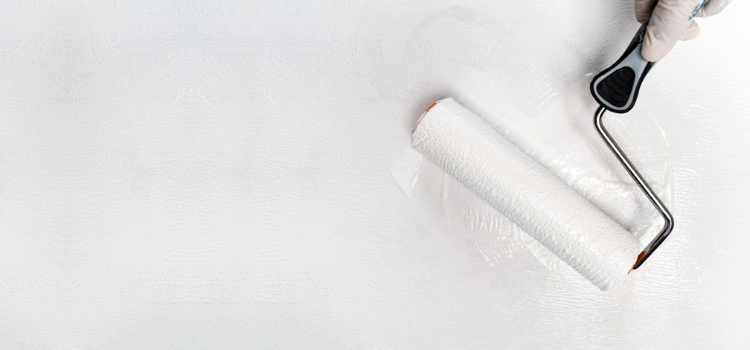
15 important house painting terminologies you need to know
22nd Jul '22 • By Service.com.au
With so many different paint types, techniques, equipment, and services available, it can feel overwhelming. So, we’ve prepared a comprehensive guide to help you understand the 15 important house painting terminologies you need to know.
If you have finally chosen to begin your painting project or remodelling, the time has come to get organised. Maybe you're undertaking the house painting job on your own, or maybe you’re considering hiring a professional painter. Remember to get at least three no-obligation painter quotes before you select the one that works for you. From there, it will be much easier to work with a professional painter if you are familiar with the terminology and processes.
With so many different paint types, techniques, equipment, and services available, it can feel overwhelming. So, we’ve prepared a comprehensive guide to help you understand the 15 important house painting terminologies you need to know.
1. Paint Types
Flat paint: The least amount of shine is seen in flat paints (also known as matte paints). Although they have excellent coverage, they are the least resilient form of paint and can be ruined if treated with cleaner. Therefore, they are better used in low-traffic areas such as home offices and on surfaces that aren’t cleaned often such as ceilings.
Eggshell: Eggshell paint finishes are very common. They're slightly more lustrous than flat paints and also more durable. Eggshell paints are ideal for low to medium traffic areas such as dining rooms, stairwells, and doorways.
Satin: Satin finishes are the most often used paint. They have a velvety sheen and are ideal for high-traffic areas such as living rooms, laundry rooms etc. But keep in mind that the sheen is more likely to expose brush strokes, so make you get help from a professional.
Semi-gloss: Semi-gloss paints are reflective and polished. Since they are highly durable and moisture-resistant, they are best used in spaces that see a lot of wear and tear or moisture, such as children's rooms, kitchens, and bathrooms.
High gloss paint: High-gloss colours are the shiniest of the group. They are among the most versatile and washable, allowing them to withstand regular scrubbing. Consider using this paint family for doors, panels, and cabinetry. For exterior paint, they can be used on various things such as shutters.
2. Painting Techniques
Cutting in: While painting, it can often be difficult to paint the corners, so the technique of cutting in is used. Brush painting along the sides of a wall to achieve an even, straight line or in areas that a roller cannot readily reach. This technique is also used to separate two colours.
Laying off: The process of laying off wet paint involves using soft strokes to redistribute paint in a more consistent manner. This is used to avoid any drips or runs, often by going in one direction.
Picture framing: When a wall is painted with a roller but brushed at the sides and corners, this is known as picture framing. Brushed areas look darker in general, resembling the frame of a photograph. Depending on the complexity of the painting technique, the painting costs can differ.
Dry timing: There are two kinds: touch dry time and recoat time. Touch dry refers to a colour that is not wet to the touch, while recoat time refers to after how long can it be painted over. The time it takes to touch dry and recoat depends on the type of paint used. Oil-based paint, for example, takes 6 - 8 hours to touch dry and is ready to recoat after 20 - 24 hours.
3. Painting Preparations
Adhesion: When painters discuss adhesion, they are referring to how much the dry paint stays on the surface without crumbling, blistering, or flaking. This is perhaps the most critical feature if you want your paint job to last a long time! It is also crucial when researching exterior paints due to the temperature and evolving seasons.
Adhesive primer: An adhesive primer is used on difficult-to-paint materials such as tiles, laminates, and reflective or glossy finishes.
Masking: Masking is an essential aspect of the painting technique. This is when you use tape or other coverings to keep paint from getting on the floors, adjacent walls, light fixtures, and other surfaces. Always use masking tape to prepare the space before starting any paint job!
Bleeding through: When the remains of previous paint or stains show through in the new paint, it is known as ‘bleeding through’. When a darker colour shows in a lighter-coloured fresh paint coat, it means the darker colour is bleeding through the newer coat.
Blistering: If you have bubbles forming on your freshly painted surface then it usually means that the surface was not thoroughly cleaned prior to adding paint. This will also happen if you paint on a previous coat until it has fully dried. Remember to take your time between coats!
Sealer: A sealer is added to certain surfaces to prevent new coats from soaking into them and creating a finish on top. They can be used on fresh plaster and drywall, bare wood, and textures such as brick and concrete.
Now you know all of the essential painting terminologies, you’ll be better equipped to work alongside your chosen professional painter!
Further Reading


